Maryam Behzadmehr
Advisor: Carlos Rueda
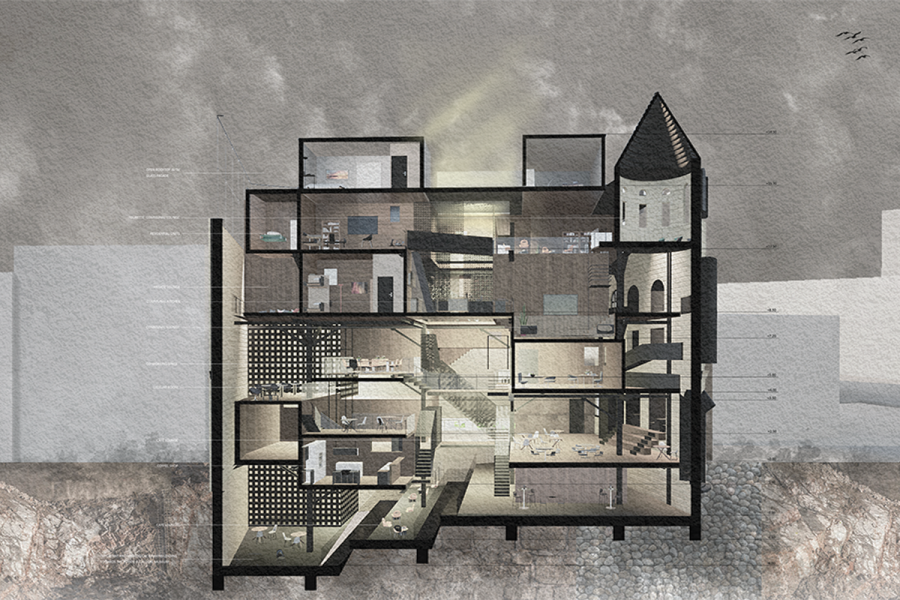
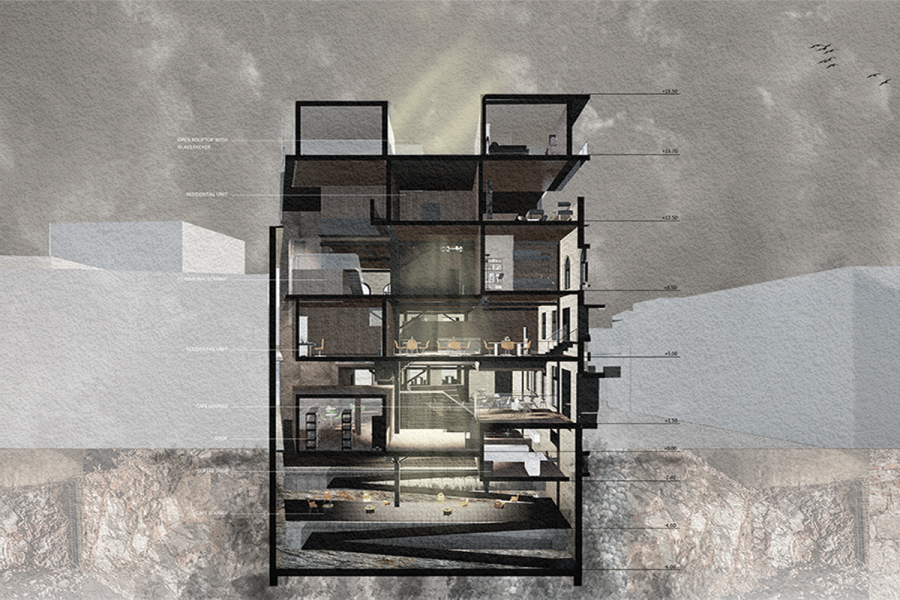
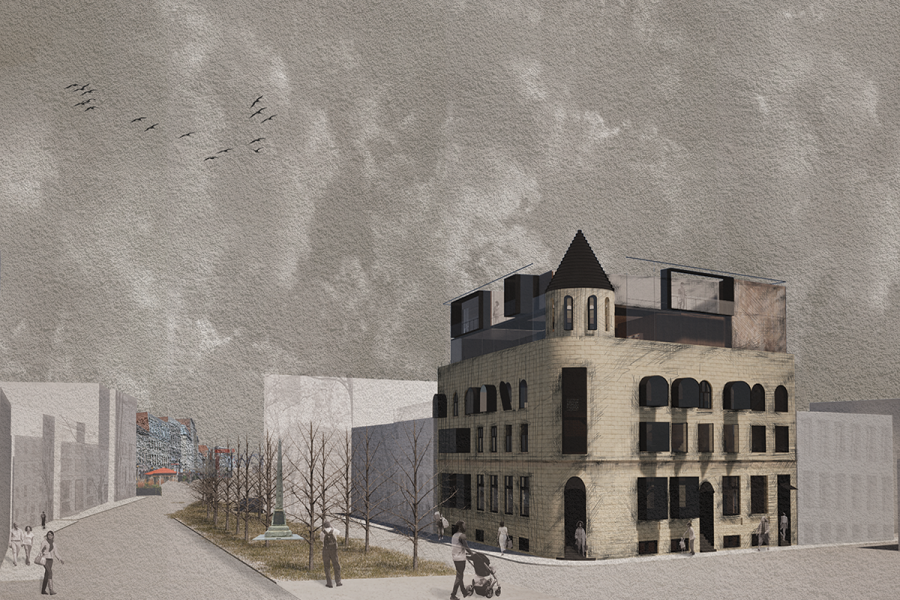
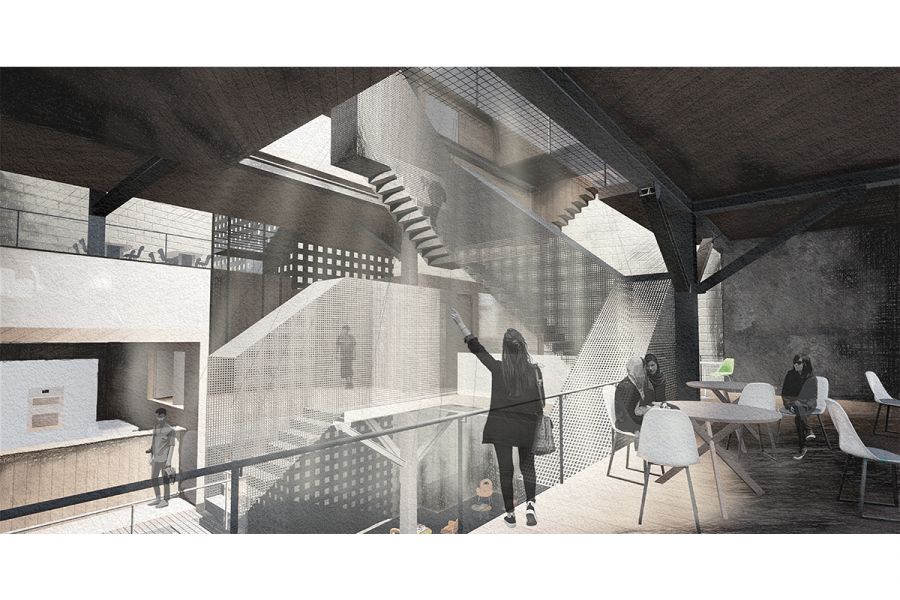
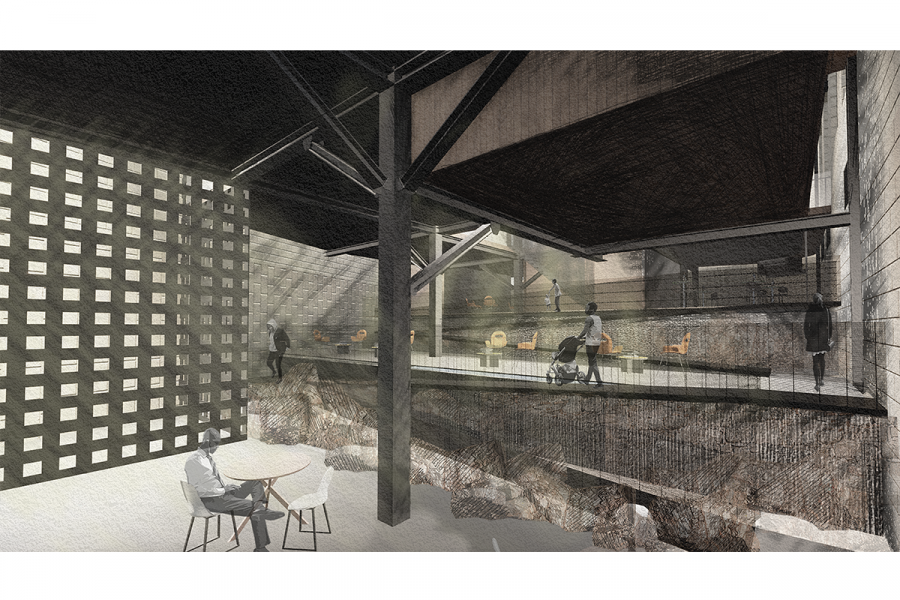
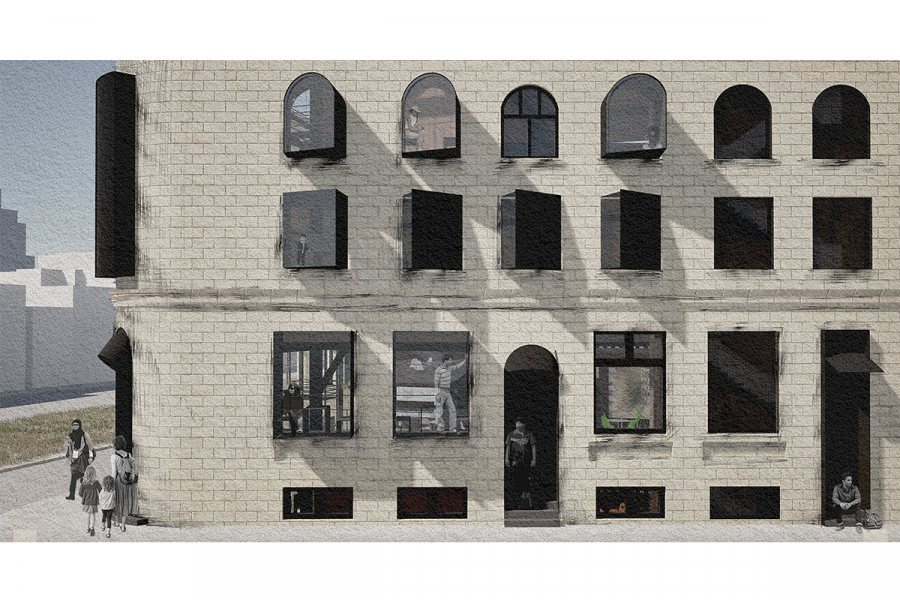
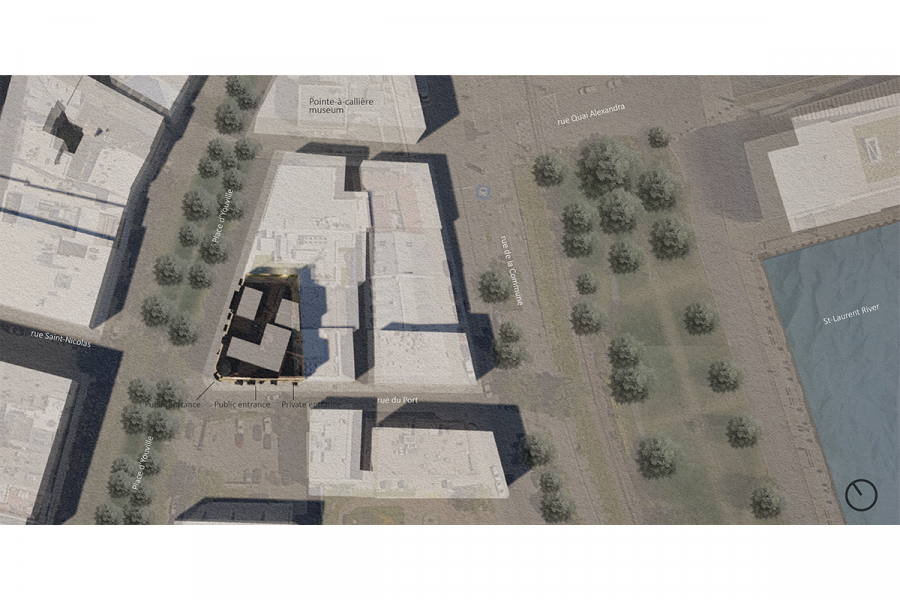
224 Place D’Youville; Uncanny and existential reorientation for displaced communities in Montreal
This thesis project takes on an exploration surrounding the theory of the unhomely and the unfamiliar, also known as the uncanny. The act of a familiar space or element turning unfamiliar is investigated in the architectural uncanny. What characteristics evoke the feeling of the uncanny? How does a situation change and become a whole new occurrence? What elements are added or modified to evoke the uncanny?
The uncanny can be described as the unhomely. The feeling of homeliness or unhomeliness are defined by many circumstances. Research on how different groups of people experience the uncanny led to a specific aspect of this theory which focuses on the notion of displacement. Movement and constant change in a person’s living environment may create disorientation, by result create a sense of unhomeliness. As such, the project focuses on immigrant communities in Montreal, people whose decision to migrate came with many sacrifices, loss and trauma.
Current social realities, such as the rise in Canada’s immigrant population, as well as ongoing housing crisis happening particularly in Montreal, helped frame the research and theories of this thesis into an architectural program. The project proposes a multi purpose and mixed used communal living arrangement, offering help and services for the newly arrived immigrant population, as well as presenting them with homes and residences. Divided into public, communal and private areas, the thesis accompanies the occupants along a vertical transitional experience, climbing towards stability and familiarisation with the unfamiliar environment. As such, the project showcases the uncanny experience of a journey towards reorientation for Montreal’s immigrant population. Delving into the world of perception, disorientation, the notion of unhomely and with an important focus on social realities, the thesis embarks on a study surrounding the uncanny experience of immigration and the path from disorientation to reorientation.
Keywords: Uncanny, disorientation, reorientation, displacement, homely, unhomely, immigrants, housing, community.
